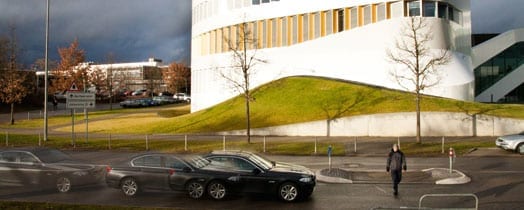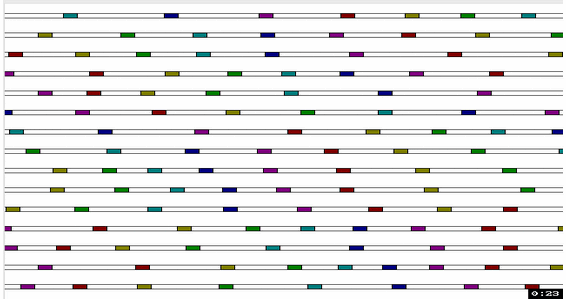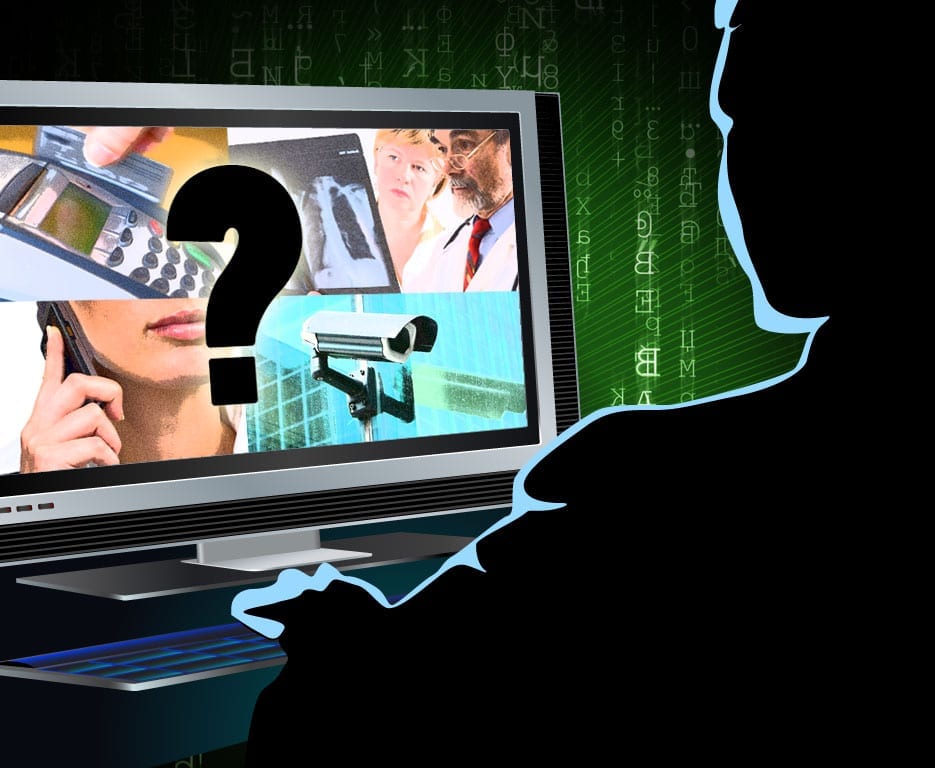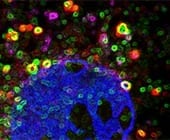
Research initiative presents new traffic technologies for cities
The partners in the UR:BAN research initiative set out to make driving in tomorrow’s cities safer and more efficient. At the initiative’s upcoming final presentation, demonstration vehicles will show how intelligent and cooperative systems could help make driving in the city even safer, more economical and environmentally more sustainable.
Drivers have to be ready to react quickly to the unexpected, especially in busy traffic. For Fraunhofer IAO project manager Frederik Diederichs, the same principle applies to driver assistance systems: “In the future, assistance systems will have to be aware of what drivers are about to do before they actually do it. To help us develop more intuitive systems, we expanded Fraunhofer IAO’s Vehicle Interaction Lab especially for UR:BAN. We also developed an algorithm for recognizing intentions,” says Diederichs. This new algorithm was installed in a BMW research vehicle and will also be on display when the initiative presents its project results.
Event motto: Making driving through the city of the future safe, efficient and stress-free
As four years of research activities draw to a close, the results will be showcased as part of an official final presentation to be held in Düsseldorf on October 7 and 8, 2015. This event will give some 300 guests the chance to spend two days getting acquainted with the latest technologies and ingenious systems and to speak directly with the experts. In addition to talks and exhibitions, the event will offer a wide range of driving demonstrations to showcase the new technologies. Researchers from each of UR:BAN’s three project areas will present a vast array of exhibits as well as some 50 vehicle demonstrators.
Members of the Cognitive Assistance project team will host live demonstrations of new systems designed to help in everyday city traffic situations, such as oncoming traffic at bottlenecks, changing lanes in tight spaces, and using emergency measures to avoid collisions with pedestrians and cyclists. The complexity of city driving calls for reliable recognition of all surrounding road users. And for the first time, this also includes recognition of likely pedestrian behavior.
One of the highlights of the Networked Traffic System project presentation will be the traffic light assistance function for use under real traffic conditions. Here, crossing an intersection becomes either a partly automated process or one in which the driver is given recommendations for how best to cross. Numerous test vehicles will bring the various functions to life – from the intersection pilot to the phased traffic lights assistant and the delay assistant.
Work in the Human Factors in Traffic project area focused on the various ways people interact with city traffic. New methods and systems were developed to research this aspect of human behavior. Based on drivers’ head movements, for instance, a system can detect early on what they are likely to do next, thereby helping them master the challenges of city driving.
Read more: Improving safety and efficiency on the road with UR:BAN
The Latest on: Traffic technologies
[google_news title=”” keyword=”traffic technologies” num_posts=”10″ blurb_length=”0″ show_thumb=”left”]
via Google News
The Latest on: Traffic technologies
- Musk Courts Chinese Officials to Seek Approval for Tesla’s Self-Driving Technologyon April 28, 2024 at 9:47 am
Elon Musk met with senior Chinese officials in Beijing on Sunday as he pushes for approval to introduce Tesla’s advanced driver-assistance technology in its biggest overseas market, where it has been ...
- AI-enhanced camera technology helps suburban Kansas City police department solve murderon April 28, 2024 at 9:30 am
Charging documents point to an AI-equipped camera system helping police find a getaway driver, a girl under the age of 18.
- US Post Office phishing sites get as much traffic as the real oneon April 28, 2024 at 8:29 am
Security researchers analyzing phishing campaigns that target United States Postal Service (USPS) saw that the traffic to the fake domains is typically similar to what the legitimate site records and ...
- Unifly, Terra Drone, and Aloft Technologies Forge Alliance for Global Air Traffic Managementon April 26, 2024 at 11:36 am
New Partnership Aims to Enhance Advanced Air Mobility with Unified UAS Traffic Management System Unifly, a leader in Unmanned Aircraft System Traffic Management (UTM) technology, has joined forces wit ...
- Why Deep Application Traffic Visibility is Key to Dedicated API Securityon April 25, 2024 at 11:05 pm
In a recent interview, Ariana Lynn, Principal Analyst at The Fast Mode spoke to Tim Erlin, Head of Product at Wallarm on the impact of traffic visibility ...
- Advancing Physical, Virtual and Cloud Traffic Visibility with NPBson April 24, 2024 at 9:55 pm
In a recent interview, Ariana Lynn, Principal Analyst at The Fast Mode spoke to Scott Register, Vice President of Security Solutions at Keysight Technologies ...
- Buttigieg: US needs more air traffic controllerson April 24, 2024 at 9:07 am
Transportation Secretary Pete Buttigieg said more air traffic controllers are needed to address the concerns of them being overworked. Buttigieg said the administration is requesting funding from ...
- Global Air Traffic Control System For Unmanned Aircraft Goal Of New Partnershipon April 24, 2024 at 8:18 am
“It will take multiple years on the legal framework side as well as multiple years on the functionality product functionality technology side to make it sufficient enough that we're super confident ...
- The exploration and practice of low-altitude airspace flight service and traffic management in Chinaon April 23, 2024 at 2:03 pm
As China propels itself into a new era of aviation with its significant advancements in unmanned aerial systems (UAS), the nation is on the brink of a transformative shift in low-altitude airspace ...
- Globacom to equip Oyo traffic managers with modern traffic technologieson April 22, 2024 at 6:25 am
The Oyo State Road Traffic Management Authority, (OYRTMA) is set to receive a boost as Globacom, the Nigerian multinational telecommunications company, pledges to equip the Agency with modern digital ...
via Bing News










